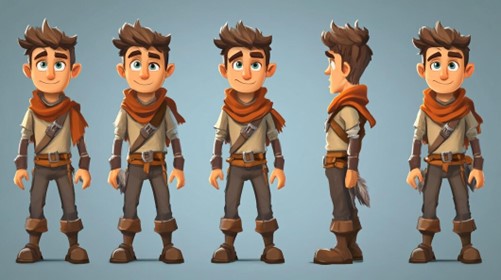The initially innocent video game add-ons have evolved into a billion-dollar sector that affects gaming and gambling practices. Cosmetic items such as rare knives in CS2 and flashy Fortnite outfits have evolved into more than visual enhancements because they create entire market economies. Digital items in the gaming market reach prices exceeding thousands of dollars and also function as components in gambling wagering. But how did we get here?
The Rise of Skins in Gaming
It began as casual, fun elements that gave characters and weapons distinctive appearances. When players discovered that digital items held actual monetary worth, everything in gaming changed completely. In CS2, rare skins became social status markers. The demand for exclusive cosmetics even influenced betting games online, where players wagered skins instead of money, fueling a new gambling scene. Special knives and limited-edition skins were valuable and could earn players a lot of money.
Developers quickly saw the potential. The company evolved from basic game sales operations to developing customized sales systems. Fortnite generated $9 billion through two years of operation, while players avoided any cost to access the game. Companies created cosmetics that became viral trends while keeping player spending levels high.
How Skins Generate Revenue
The items we call skins function as more than decorative features since they operate as financial generators. Games employ multiple approaches to make players continuously purchase:
- Game players can make direct it purchases from the store at elevated prices. Some exclusive skins emerge briefly into the market before disappearing.
- The digital mystery chests known as loot boxes let players spend money in exchange for rare in-game items in a manner that resembles slot machine gameplay.
- The seasonal battle pass system allows players to acquire skins through game challenges, which sustains their engagement while they spend money.
Combining unique features and market demand transformed it into substantial financial assets in the gaming industry.
The Skin Trading Economy
The market value of unique CS2 items reaches thousands of dollars, and specific platforms function as trading platforms for these assets. The trading market resembles a stock exchange, where players seek to acquire low-priced items before raising their value for profit. Discussions about trading strategies and market trends often surface on Melbet India Facebook, where enthusiasts share insights and predictions. The market shows strong growth yet remains unstable.
Skin Marketplaces and Their Role
This economy is built upon online skin marketplaces. The Steam Market executes millions of transactions and collects a percentage of all sales. Third-party sites provide instant cashouts and trading features that extend beyond official game platforms.
Trading is an additional source of income for those who engage in it. A successful $1.50 case drop can generate $1,000 in profits when luck shines on players. The trading value of cosmetics, discontinued designs, and community-generated items creates speculation among players. Some owners keep their items for extensive periods while waiting for the prices to increase dramatically. Values rise significantly because of their limited availability and high market demand.
Risks and Challenges in Trading
The opportunity to trade skins through this market presents significant dangers to participants. Traditional financial instruments do not influence values because they depend on consumer demand, developer modifications, and game content updates. A minor game adjustment can instantly erase any skin’s value, causing traders significant financial losses.
Another significant issue is scams. The community faces threats from fake trading sites, phishing scams, and untrustworthy traders. People have lost their life savings to deceptive trading platforms they trusted or by giving their skins to dishonest individuals. The secondary economy is a high-risk, unpredictable environment despite developer monitoring efforts.
Influence on Player Behavior
The high cost and rarity of skins build player status, giving them an individual feel in the face of numerous opponents. People either spend long periods grinding for free or a lot of money for a unique appearance. Among CS2 players, flashy knife skins serve multiple purposes because they represent experience level, good fortune, and expensive ownership.
Combining loot boxes, limited-time skins, and special drops pushes players toward spontaneous purchasing. The human brain naturally responds to skins, which make us feel unique and competitive while seeking exciting experiences.
The Future of the Skin Economy
Skins aren’t going anywhere. The cosmetic market grows alongside the progression of gaming technology. Developers’ experiments with blockchain technology enable players to genuinely own skins despite being outside the game environment. The upcoming market might integrate cross-game skins that function across different platforms. This economy continues to expand as it adjusts to emerging technologies and player market needs while attracting billions of dollars in revenue.
